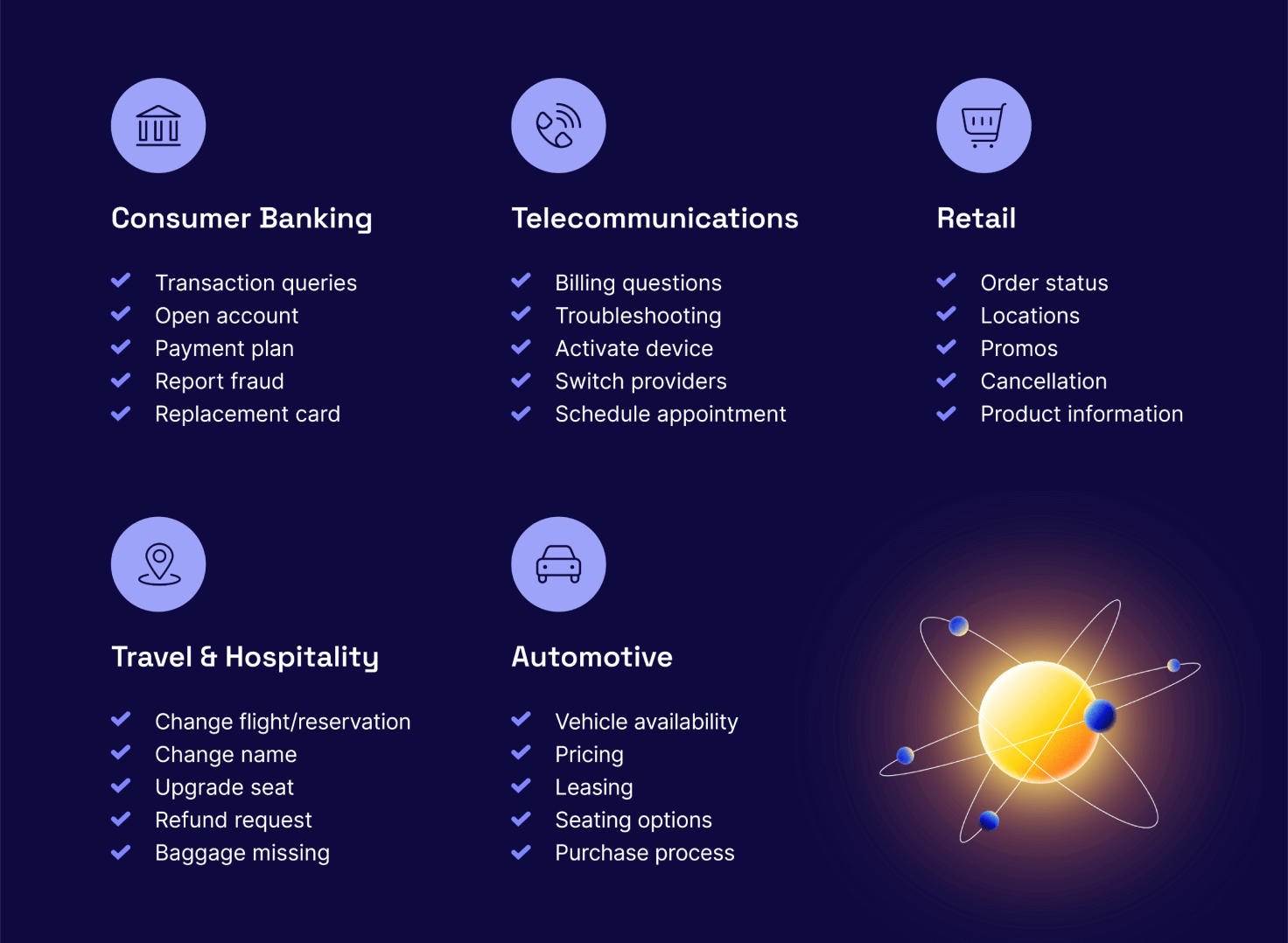article
Bridge the AI gap by harnessing your customer intent data
How to leverage intent data to build a better online chatbot and so much more
February 16, 2024 • 6 minutes

How well do you know your customers? When given a choice between interacting with a human or an AI chatbot to take care of a common task, the majority of consumers in 2024 prefer humans. Yet, most business leaders overestimated how many would choose AI chat during the customer journey— by an average of 19%.
This disconnect between business leaders and their customers when it comes to AI is just one piece of the emerging “AI gap”. No matter how excited your company is about rolling out new generative AI advancements, the fact is your average consumer does not (knowingly or unknowingly) interact with AI on a daily basis. There is still a good amount of AI education, understanding, and practice that consumers are missing out on.
To overcome the AI gap and deliver self-serve experiences your customers actually love, businesses need to build safe, reliable, and personalized automation. It’s the only way to bridge the AI gap and keep pushing the digital transformation journey forward.
Fortunately, there’s one aspect of your customer experience that is primed for generative and conversational AI. Messaging. Those digital conversations taking place on your website, SMS, or messaging apps are some of the best places to introduce AI technology without driving customers away. This is because generative AI can make conversing with a bot feel natural, on channels people already know and trust. That is, as long as you build AI chatbots and automation to solve customers’ specific pain points — not create new ones.
So how do you know what problems customers want to solve with AI and automation? It’s in your customer’s intent data. The actual words customers use to request information or an action from your brand. Understanding what common intents customers are repeatedly requesting will help you define a clear direction for AI and automation.
Identify customer intent data and put it to use
Thousands, if not millions, of customer conversations are happening in your contact center every year. These conversations are full of raw, unfiltered customer feedback on your products, services, operations, and more. Tapping into this consumer intent data is the key to finding opportunities to improve operational efficiency and reduce spend.
To harness this customer data, conversational intelligence tools are a must. These AI-powered tools can help you cut through the noise of your phone, email, or messaging customer interactions and find meaningful patterns in your conversation data. Conversation transcripts across all channels can be analyzed to find and group the most prominent topics so brands can know where to focus their attention. For example, a bank may see that customers frequently ask about their account balance. Or a multinational restaurant brand finds that pick-up orders are consistently placed at the wrong location. Or perhaps agents at an automotive company are bombarded with product inventory questions.
Understanding your customer intent data through intent detection is the first step to identifying the best opportunities to build AI bots and automation consumers will want to use.
Address industry-specific pain points with online chatbots
LivePerson’s platform supports millions of conversations daily. Based on our decades-long experience working with some of the largest enterprise brands in the world, here’s our analysis of the most common intents potential customers are looking to resolve every day across different industries and multiple channels. These are all examples of intents LivePerson customers build AI bots and automation for, helping improve operational efficiency.

Build AI bots with purpose
We know generative AI bots can help streamline customer support and provide quick, relevant answers to both routine and more complex customer inquiries. That’s why 84% of business leaders say they are currently using AI to engage with customers, according to LivePerson’s State of Customer Conversations 2024 report. But the fact still remains, consumers are cautious when it comes to using AI chatbots to engage with brands.
The good news? A majority of consumers do believe an AI chatbot can respond to them quickly, is convenient, and is easy to use. Lean into these expectations and bridge the AI gap by creating intuitive, no-nonsense AI-empowered experiences that provide valuable information and solve problems. Your customer intent data can point you in the right direction on where automation may be needed.
Conversation intent data can be used to determine what chatbots to build, identify the best content to guide your LLM, and set your automation up for higher containment rates. Whether you’re building rule-based bots or generative AI agents, understanding customer intent is critical. This is how an AI agent is going to know how to respond to the query, resolve the problem, or route the customer to a human agent.
Let’s look at how LivePerson customers leverage intent data to find automation opportunities
The RealReal: Noticing an increase in customer contact after the consignor drop-off stage, the team at The RealReal implemented automated messaging updates to keep consignors up-to-date with the status of their items. This was one of the first steps in building out a fully automated white-glove service for their VIP customers.
SKY: To keep up with the rise in customer service queries during the start of the COVID-19 pandemic, the team at SKY Cable Corporation implemented an automated chatbot, Kyla. The online chatbot led to decreased wait times and an all-time high customer satisfaction score.
In just a few clicks, AI and automation can have long-term impacts on your customer service
Decreased agent attrition: Building automation for the things customers repeatedly ask for frees up your agents to work on queries that require more context and a human touch. Agent-facing generative AI can also help empower agents by providing them with relevant content like conversation summaries and accurate recommended answers. This gives agents more opportunities to provide strategic problem-solving and reduce mundane tasks.
Increased conversation and consumer intent data: The more conversations you automate, the more customers you can support. This leads to an increase in customer conversation data, including purchase intent data. With more data, your team is able to uncover new opportunities to improve the customer experience, operational efficiency, and ultimately the bottom line.
The past few years have brought to light some incredible advancements in AI. While businesses are eager to implement AI solutions, consumers are still getting to know this new tech. Take this time to understand your customer needs and build AI solutions that consumers actually want to use. This is how you bridge the AI gap.

